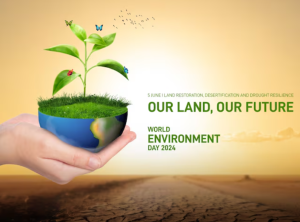While many Indian organizations have policies for cultivating diversity, there is still a gap between intent and execution. An incomplete definition of diversity, regressive laws and societal views are largely responsible for this. What can organizations do to change this situation?
Real diversity management requires a capacity for recognizing and understanding a wide variety of identities and voices. Any organization that does not have a diversity policy is ignoring an important aspect of doing business. However, there is an economic caveat attached to this. The harsh reality is that most organizations do not address this aspect until they have reached a level of stability with their finances. By that time, it may be too late to hardwire an appreciation for diversity into the organization’s DNA.
From a societal perspective, the good news is that decibel levels of voices against social injustice and discrimination have gone up in recent times. The kinds of topics that media now regularly talks about were not aired a decade ago. Our willingness to engage in conversations on thorny social and political issues can be viewed as progress.
And yet, there is still a bias in what we feel merits further discussion and action. Women’s rights and gender equality have received a lot of press lately and rightly so. As a result, organizations are exploring a variety of strategies to restore and maintain gender balance within their ranks.
For other groups, however, the outlook for a life free of discrimination is still grim. There are two groups that primarily come to mind here: members of India’s LGBT community and people who count themselves as physically challenged. The reasons for this are tied to both the physical and socio-legal conditions in our country.
For the physically challenged, a woeful lack of urban infrastructure and facilities limits their access to employment opportunities. When it comes to the rights of the LGBT community, the laws in the country are regressive and reflect the still evolving public opinion on this topic.
In both instances, Indian organizations have been unable to show that they are committed to being inclusive. While the intent is there, the broader framework needed to push it through is missing. I personally know of an HR professional who attempted to recruit more transgender individuals into the company. However, this became difficult to sustain in the face of inflexible hiring criteria and requirements. Most organizations are unwilling to bend the rules in trying to promote heterogeneity and diversity.
The hesitation may stem from the fact that they do not feel equipped to follow up on such diversity-based hiring with policies to ensure a healthy working environment for all their employees. At a minimum, such follow up action should root out any potential for emotional violence aimed at these individuals.
Still, businesses have come a long way in this journey. Hiring and promotion decisions are now largely merit-based. The Indian counterparts of multinationals have inherited HR systems that place an emphasis on diversity-based hiring and are trying to adapt these imperatives to the local context.
Organizations are also encouraging employees to form support groups and are making it easier for employees to come forward with concerns and grievances.
For the most part, companies are discovering that it doesn’t take much in the way of additional resources in order to signal that they are serious about building diversity in their ranks. Beyond resources, developing a practice of genuine conversations about current and emerging issues can help them progress on this front.
While trying to do more in this area, however, organizations sometimes run up against a few Indian laws that are not framed or intended for modern times. What recourse, for example, does a member of the LGBT community have if he is being subjected to emotional and sexual harassment by a male boss? A system that has decreed homosexuality to be illegal is not likely to examine more nuanced issues of consent in such cases.
We need more social teeth to address these gaps that leave groups of people exposed and vulnerable. Fortunately for us, many celebrities from the entertainment industry are speaking out against such group side-lining with support from liberal sections of our society.
The recent US Supreme Court decision legalizing gay marriage came in the wake of a significant shift in public opinion that was also driven by cultural heroes and their supporters in the business world. Similarly, Indian laws have historically followed the way we live and work and that is how the gay rights issue is likely to play out in the country.
We celebrate certain forms of diversity – of food, dress, religion – enthusiastically in our offices. But this can become a superficial activity that glosses over the real picture if we don’t acknowledge diversity of all forms – gender, sexual orientation, physical ability and more. Perhaps we need to think beyond celebrating differences to cultivating true respect for these.
For now, Indian organizations are doing their bit by checking the boxes and following certain hygiene factors in hiring. By fortifying their policies with more resolve and throwing their weight behind the cultural movement for change, they can demonstrate that diversity is more than a word in a hiring manual. It is the only way forward for business.
The author consults on diversity and other leadership topics. He and his partner live in Bangalore.




